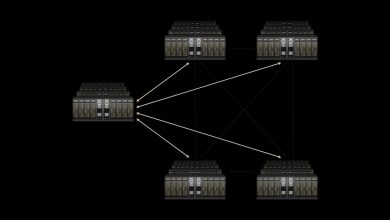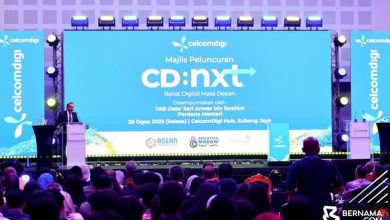DataStax Identifies Biggest Hurdles to GenAI Adoption, Calls on Companies to ‘Embrace Change’

Change can be a scary thing. Charting the unknown can be unsettling.
It’s why organisations sometimes take too long to adapt to changes. It’s the reason they hesitate to adopt new technologies. It’s why many companies can’t break free from the status quo they’re in—even when presented with a solution that could radically alter their future.
Then again, it’s human nature to be scared. It’s natural to want to stay in that comfort zone rather than take a risk.
 But according to DataStax APAC General Manager Jihad Dannawi, this aversion to risk, along with a lack of education, is likely preventing organisations from fully utilising the game-changing innovation that is generative AI, which has been identified in the “Deloitte Tech Trends 2024” report as a key driver for business growth.
But according to DataStax APAC General Manager Jihad Dannawi, this aversion to risk, along with a lack of education, is likely preventing organisations from fully utilising the game-changing innovation that is generative AI, which has been identified in the “Deloitte Tech Trends 2024” report as a key driver for business growth.
“Some people need to wait and wait to have the perfect TCO, the perfect use case. But I think we are discovering more and more use cases while building generative AI scenarios,” Jihad pointed out to Data & Storage ASEAN in an exclusive virtual interview. “So, we see some organisations who are stuck in doing POCs (Proofs of Concept) because they are afraid to go to production—or sometimes you need to force that first POC to production to then think about the next wave of use case.”
The Scourge That Is Low Risk, Low Reward Thinking
All this waiting is counterintuitive—and a lot more common, according to a global study by MIT Technology Review Insights. The study, produced in partnership with Telstra International, found that although most (76%) companies surveyed had worked with generative AI in some way in 2023, only 9% of them adopted the technology widely. Most experimented with it in only one or a few limited areas, the most common being automation of non-essential tasks—a low-risk, low-gain approach to using GenAI.
“Low risk, low gain, however, won’t cut it in this competitive business landscape,” noted Jihad, who is imploring businesses to embrace the GenAI change and to talk to companies like DataStax about it.
“There’s value for organisations to talk to us because we can share those use cases,” said Jihad. “Not all use cases are in production or public. So, at least we can help them during the education phase. But we see organisations who are willing to use technology and innovation as a competitive advantage.”
These organisations, according to Jihad, are embracing change and thinking about converting it into an advantage without “waiting for the market to be ready.” Those who wait, Jihad pointed out, are merely followers and won’t benefit from the innovation to begin with but will “just be part of the rest of the world.”
Those embracing change, though, are necessarily taking the technical risks that come with it. At least for DataStax clients, that risk is being taken by the generative AI company, which is one of only a select few organisations with a GenAI competency for AWS.
DataStax: Taking Care of the Technical Layer
Specifically, DataStax handles what Jihad calls the “technical layer,” which dovetails into three main dimensions: Capturing new business, increasing efficiency, and reducing costs.
“A lot of the innovation starts from the developer. And then they need to look at which solution they should use. So, first, there’s no AI with that data. If you don’t have data, your AI will be useless,” Jihad explained. “So, you need an engine that can, number one, handle your data in a secure way. You need an enterprise-grade database that can be compliant with your regulation… and we are running on-premises or in the cloud.”
In other words, companies like DataStax provide organisations willing to embrace change with the technical capacity to benefit from this change in the way of new business, better efficiency, and cost optimisation.
Embracing change—in this case, adopting generative AI specifically—is something Jihad hopes more companies will do, especially with the GenAI wave getting bigger and bigger.
“That wave is too big,” Jihad pointed out. “Where will it go? It’s the same question when the first mobile app came and people were thinking it’s just a web application on the mobile phone, or they were even calling them web apps. And look now, you can do everything on the phone. We don’t even know how far that wave will go, so we have to embrace it.”
But, again, change can be a scary thing. Charting the unknown can be unsettling.
The right technology partner can change the dynamics of this process, reducing uncertainties and stripping away most of the complexity that comes with embracing the transformative power of generative AI.
DataStax, which recently launched Astra Vectorize and has been a leader in vector technology, can be that partner that enables organisations to utilise the full breadth of GenAI—but in less time than other technology companies. Meaning, that customers can see returns on their investment in a matter of weeks and then request additional capacity moving forward.
All that, though, starts with one critical thing: Embracing change.




